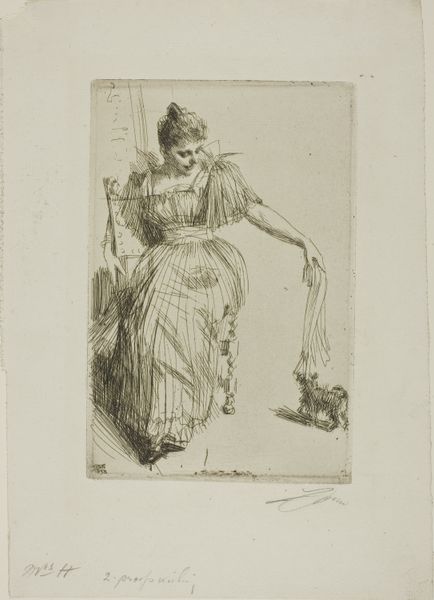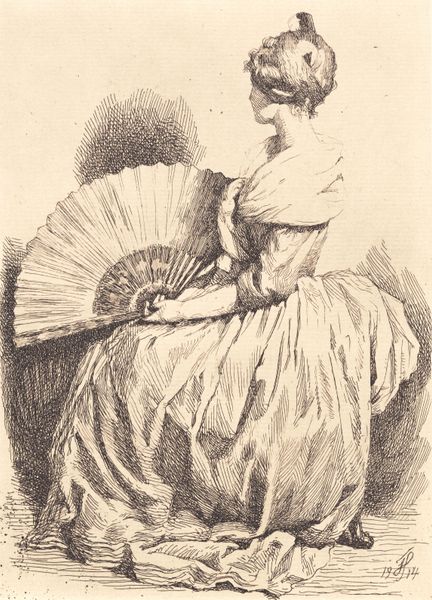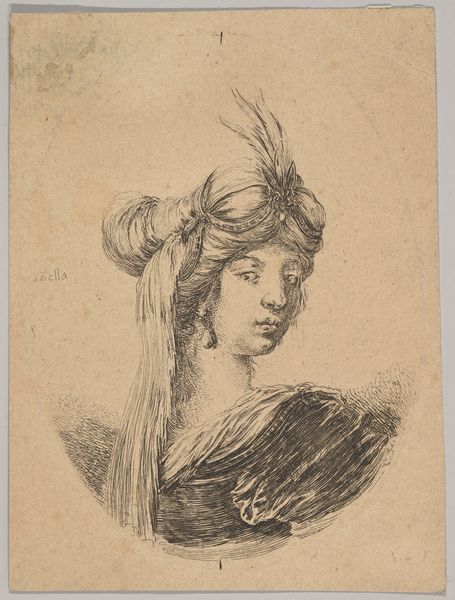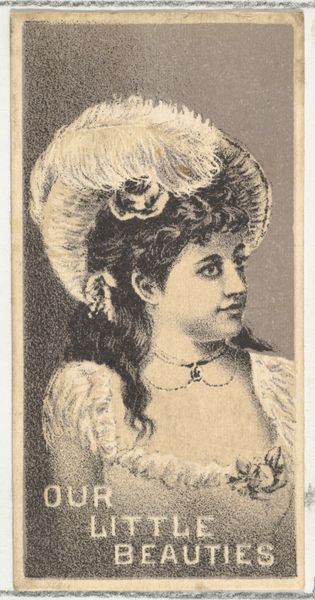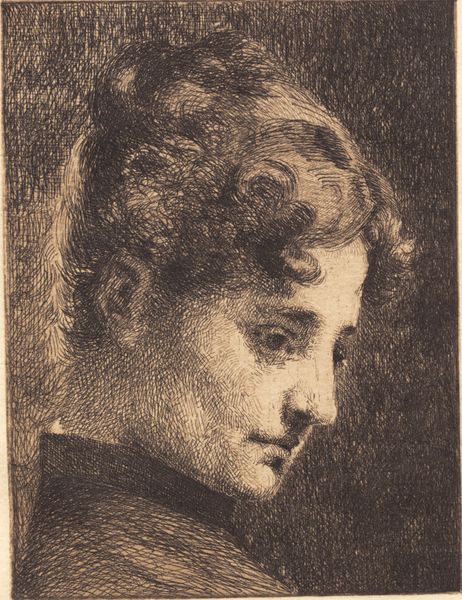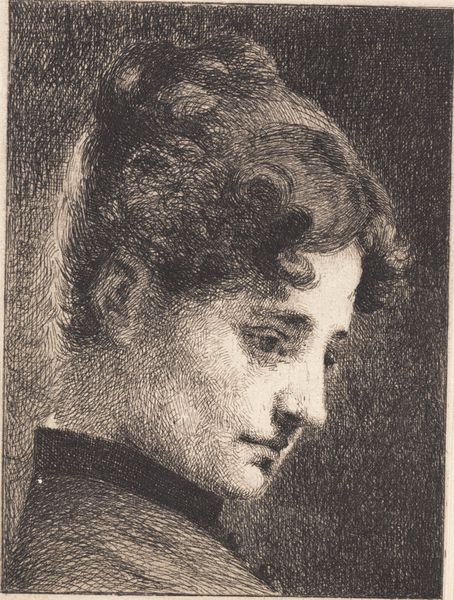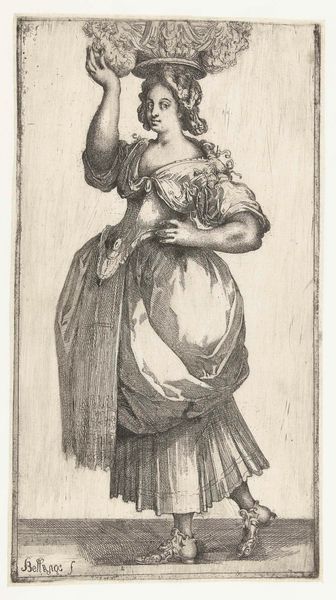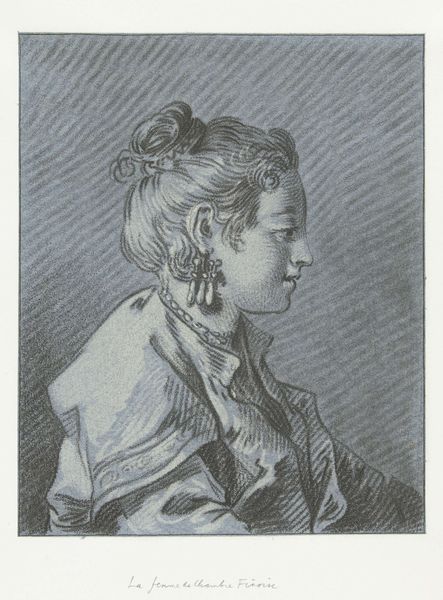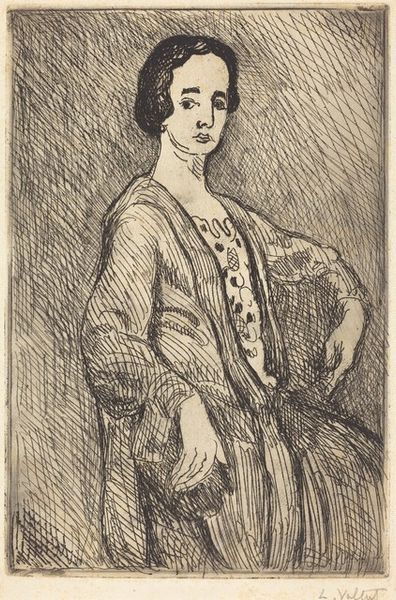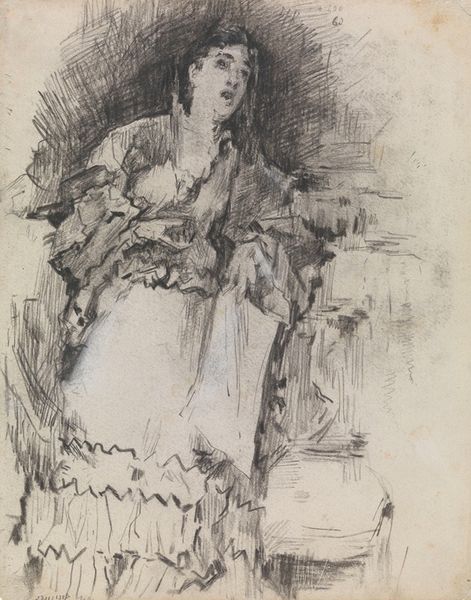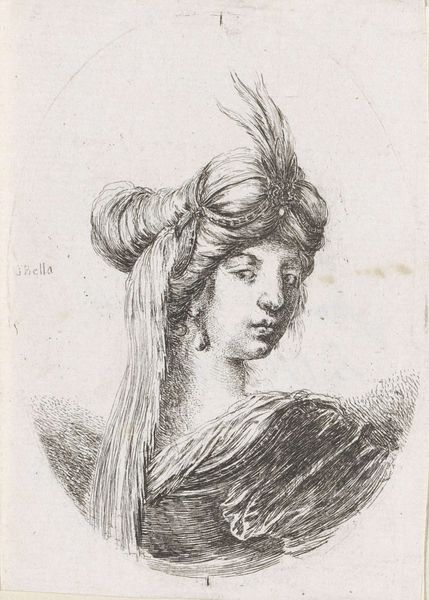
Dimensions: plate: 151 x 101 mm image: 135 x 87 mm sheet: 314 x 240 mm
Copyright: National Gallery of Art: CC0 1.0
Editor: So, here we have "The Token," an etching from 1887 by Frederick W. Freer. It presents a portrait of a woman holding a fan and what looks like a flower. There's a certain... wistful quality to it, maybe even a touch of melancholy. How do you interpret this work? Curator: I see this piece as an interesting comment on the role of women within the confines of 19th-century society. Her gaze is directed away, not engaging the viewer, almost lost in thought. The token, that small flower she holds, is likely symbolic. What could it represent within the rigid social structure of that period? Think about the language of flowers, the unspoken communication permitted within strict courtship rituals. Editor: I hadn't considered that. The "token" could be a memento with a hidden meaning. Does the romantic style factor into that interpretation? Curator: Absolutely. Romanticism often explored themes of interiority and emotion. Here, the woman’s thoughtful expression invites us to consider the limitations placed upon her. Is the romanticism superficial, simply the artistic trend of the time, or a lens for Freer to examine something deeper, such as the limited agency afforded to women in expressing their desires and ambitions? Editor: So, the wistful expression isn't just aesthetic; it might be indicative of something larger. And the fan becomes not just a prop, but almost a shield. Curator: Precisely. It is important to ask, who is she shielding herself from and why? The closed fan, her averted gaze, are all potential signifiers that we need to unpack to better understand the complexities of identity within that period. What about her class? Does her attire play a role? Editor: It does make me wonder if there's a subtle critique embedded within this seemingly simple portrait. I'll definitely look into the language of flowers! Curator: Exactly. It opens a dialogue between art history, social context and identity. That's where the real understanding begins.
Comments
No comments
Be the first to comment and join the conversation on the ultimate creative platform.
